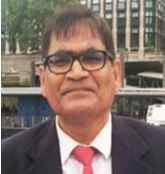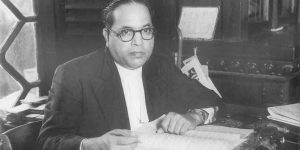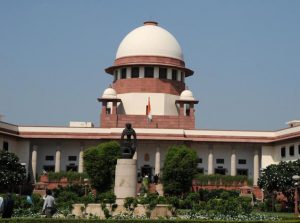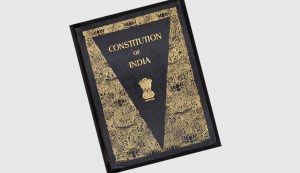 Prof. Satya Narayan Misra in Bhubaneswar, December 02, 2022: Unlike the US constitution, the concept of separation of power is not clearly etched out in our Indian constitution. This has led to major spats between the executive & the Judiciary regarding the supremacy of each other.
Prof. Satya Narayan Misra in Bhubaneswar, December 02, 2022: Unlike the US constitution, the concept of separation of power is not clearly etched out in our Indian constitution. This has led to major spats between the executive & the Judiciary regarding the supremacy of each other.
Mrs Indira Gandhi fired the first salvo by introducing the 24thamendment (1971) where she proposed that every provision in the constitution can be amended or deleted through an amendment. The Supreme Court in 1973 puta caveat that the ‘basic structure of the constitution cannot be effaced. They include provisions like federalism, democracy, republican form of govt., secularism, separation of power and independence of the judiciary.
Stung by this caveat, Mrs Gandhi tried to amend the constitution. In 1976 by including two clauses in Article 368, reiterating parliament’s supremacy in amending the constitution and obliterating the judicial review powers of the Supreme Court. However, in the iconic Minerva Mills judgement (1980) the parliament has been denied the will to be omnipotent and the judicial independence asserted through judicial review.
The Indian constitution envisages the separation of the judiciary from the executive in Article 50. Unlike other constitutional authorities like CAG and CEC, the president who is the executive head is expected to consult the chief justice of India in the matter of appointment of High Court and Supreme Court judges.
 There was a great deal of debate in the constitution assembly about the selection process. Dr B R Ambedkar was keen to adopt the US model where a presidential nomination is subjected to the examination of the senate committee on judicial appointments. However, he didn’t press for this process since he thought, “Democracy in India is only a top dressing on an essentially undemocratic India”.
There was a great deal of debate in the constitution assembly about the selection process. Dr B R Ambedkar was keen to adopt the US model where a presidential nomination is subjected to the examination of the senate committee on judicial appointments. However, he didn’t press for this process since he thought, “Democracy in India is only a top dressing on an essentially undemocratic India”.
The process of consultation with the chief justice of India has been going on since 1951 wherein the opinion of the CJI is accorded the highest importance. The years 1973 to 1977, sadly witnessed supersession of judges once in 1973 and then in 1977 when the court didn’t pander to the social philosophy of Socialism of the Congress Party. This raised the bogey of judges being committed to the powers that be & cast a shadow on the selection of judges & their transfers by the party in power.
The debate about judicial and executive supremacy reared its head in the S.P. Gupta Vs Union of India Case (1982) when the court clearly gave primacy to the central government and not the Supreme Court in the matter of appointment of judges, as they are elected and accountable to the people.
Justice Bhagawati observed that’ judges should be of stern stuff and tough, unbending before power; economic or political. They must uphold the core principle of rule of law viz.“Be you over so high, the law is above you”. He also quoted Shakespeare who wrote, “it is excellent to have giant strength but it is tyranny to use it as a giant”. The S.P. Gupta case is also significant because it didn’t give primacy to the CJI in the matter of the selection of judges.
However, in the Second advocates on record case (1993), the SUPREME COURT completely overruled the 1982 verdict and suggested that the judges would be appointed on the basis of the recommendation of collegiums which will have a CJI and four other judges. It also clarifies the word ‘consultation’ in Art. 124 (2) should be construed to read as “concurrence”.
 The collegium system has been in operation since 1993 and many legal luminaries and previous SUPREME COURT judges like Justice Ruma Paul believe that the whole process is opaque in the absence of manifest guidelines. The principle of seniority which was at the heart of 3 judges quitting in 1973 when they were superseded by Justice A. N Roy is routinely violated by the collegiums, giving rise to criticism of judicial nepotism.
The collegium system has been in operation since 1993 and many legal luminaries and previous SUPREME COURT judges like Justice Ruma Paul believe that the whole process is opaque in the absence of manifest guidelines. The principle of seniority which was at the heart of 3 judges quitting in 1973 when they were superseded by Justice A. N Roy is routinely violated by the collegiums, giving rise to criticism of judicial nepotism.
Accordingly, in 2015, the govt brought in an amendment to Art. 124 as per which they suggested that a commission titled NJAC should be the basis for the judicial appointments by the president. It included the CJI as chairperson, 2 senior judges, Law Minister and 2 eminent persons. Surprisingly the SUPREME COURT struck it down as it would interfere with the independence of the judiciary. It also invoked the basic structure principle as per which judicial appointments should be independent of the executive.
In the above judgement, a dissenting opinion was raised by Justice Chelameswar who had observed that transparency is a vital factor in constitutional governance. Drawing reference to the SP Gupta case he observed that the assumption of the primacy of the judiciary in the appointment of judges is empirically flawed. To hold that the govt should be excluded from the process of appointing judges is a doctrinal heresy. For Justice Chelameswar, the majority viewpoint offends the principle of separation of power, which is a basic feature of the constitution.
Going by the trend of arguments one clearly discerns that most of the judges including the retired CJIs support continuation of the collegiums system while lawyers & jurists are against the continuation of the collegium system. . To be fair to the judiciary they have greater expertise in the matter of selection judges provided the selection process is objectively crafted and is known to all the stakeholders. The present CJI has observed that many bright young lawyers from the Supreme Court would be ideal candidates for becoming judges of HC.
Sadly, there is no discussion as to why the proposed creation of an Indian Judicial Service (1978) is not being put into effect. This will bring in bright and talented lawyers into the scaffolding of the judiciary. It seems that the Supreme Court is averse to implementing IJS as it would hinder the promotion of existing lawyers.
When Pandit Nehru asked Mr. MC Setalvad regarding the criteria for the selection of judges, he said more than independent minds we should look for competent judges. ‘In the US the best of minds competes for judicial seats because it carries huge gravitas unencumbered by financial consideration. The very fact that the best and brightest in the legal fraternity don’t opt for a judgeship is a reflection of the uncertainty that shrouds the existing selection system.
 The National Commission to Review the Constitution (2002) suggested that a National Judicial Commission, with three judges including CJIs, Law Minister & a person nominated by the President should substitute the present opaque collegium system. It will give the judiciary a majority voice as opposed to the NJAC structure, where the apple cart can be tilted by the party in power. The time for introducing IJS & replacing the collegium system with NJC has come to restore faith in the selection process.
The National Commission to Review the Constitution (2002) suggested that a National Judicial Commission, with three judges including CJIs, Law Minister & a person nominated by the President should substitute the present opaque collegium system. It will give the judiciary a majority voice as opposed to the NJAC structure, where the apple cart can be tilted by the party in power. The time for introducing IJS & replacing the collegium system with NJC has come to restore faith in the selection process.
The government is the biggest litigant, with myriad attempts to clamp unreasonable restrictions & human rights violations. Yet in any scheme of democratic governance, the executive cannot be kept out of the selection process. The present imbroglio between the executive & the judiciary must end.
Martin Luther King Junior Jr wrote: ‘The arc of the moral universe is long and bends towards justice.’ Judges can become the bridge between reality & constitutional goals.


Leave a Reply
Be the First to Comment!